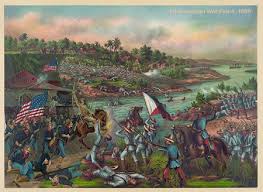Philippines' Resiliency Through Autonomy
The Philippines has been a prey for numerous predator countries for such a long period of time. Although it came to this, the Philippines demonstrated remarkable resilience in the face of domination and strife. The country was well-known for its adaptability and strength against foreign control and internal conflicts. Despite this, the Filipino nation maintained its cultural identity and customs despite more that three centuries of Spanish domination that enforced fresh social arrangements, religious practices and economic systems. Local communities showed their toughness by always opposing colonial repression which caused many uprisings and revolutions against the Spaniards. The short American period also brought new forms of governance and economies but Filipinos still managed to preserve their independence.
In response to this, the Pinoys way out of the problems raised by colonialism was a mix of both opposition and acceptance which paved their way towards autonomy. Several revolts and revolutionary movements such as the one seen in the Philippines at 1896 and later responding to America’s colonialism appeared in the 19th century as way of rejecting invasive dominion of foreign authorities over the land owned rightfully by the Filipinos. These movements served not only as means through which people fought for freedom from colonialism but also help them realise a common nationhood that unified them amidst great diversities found within an archipelago made up of several islands. In order to effectively counter colonial domination, revolutionary authorities were established and in 1899 a constitution known as the Malolos was drafted accordingly. However, there were many obstacles encountered in the course of attaining idependence including infighting between different fractions as well as difficulty in handling intricate global politics.
Furthermore, the difficulties faced during the colonial period and after it were a lot and different. The fight for independence was stained by conflicts within as well as with the colonial powers, hence, periods of instability and uncertainty existed. The Philippines was under new forms of governance and political realities after the Spanish-American War and subsequent treaty of Paris which saw America took control over it. War and economic dislocations made it hard to join dissimilar regions and cultures to form a single nation. Social inequalities had long been in existence while colonial exploitation still affected its development. Nonetheless, throughout this colonial era, the Philippines showed great strength that would eventually lead them to self-rule at confronting challenges through courage and adjustment.
References:
image 1- https://images.app.goo.gl/EypPxJW3U42WjpsJ7
image 2 - https://images.app.goo.gl/KuyV2pRYf5Tqgo3h7
image 3 - https://www.google.com/imgres?imgurl=https%3A%2F%2Felecciones.smartmatic.com%2Fwp-content%2Fuploads%2Fflag-philippines.png&tbnid=nyVOKrcCf_4Y8M&vet=1&imgrefurl=https%3A%2F%2Felections.smartmatic.com%2Felections-in-the-philippines-the-best-perceived-in-its-democratic-history%2F&docid=KcezomnRIq7QGM&w=900&h=569&source=sh%2Fx%2Fim%2Fm1%2F1&kgs=8f6ff4fa03a9e4ad&shem=abme%2Ctrie




.jpeg)
.jpeg)

No comments:
Post a Comment